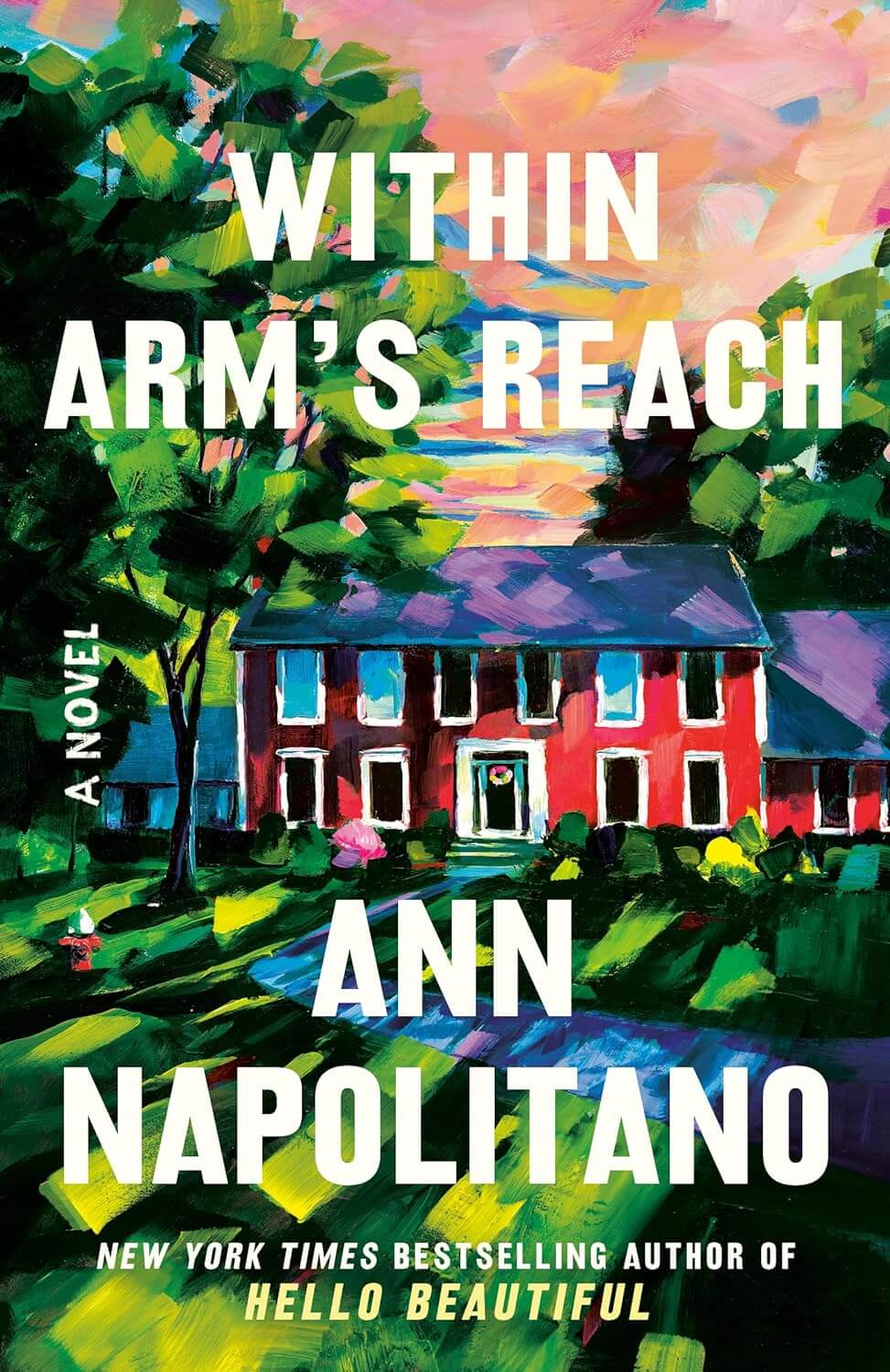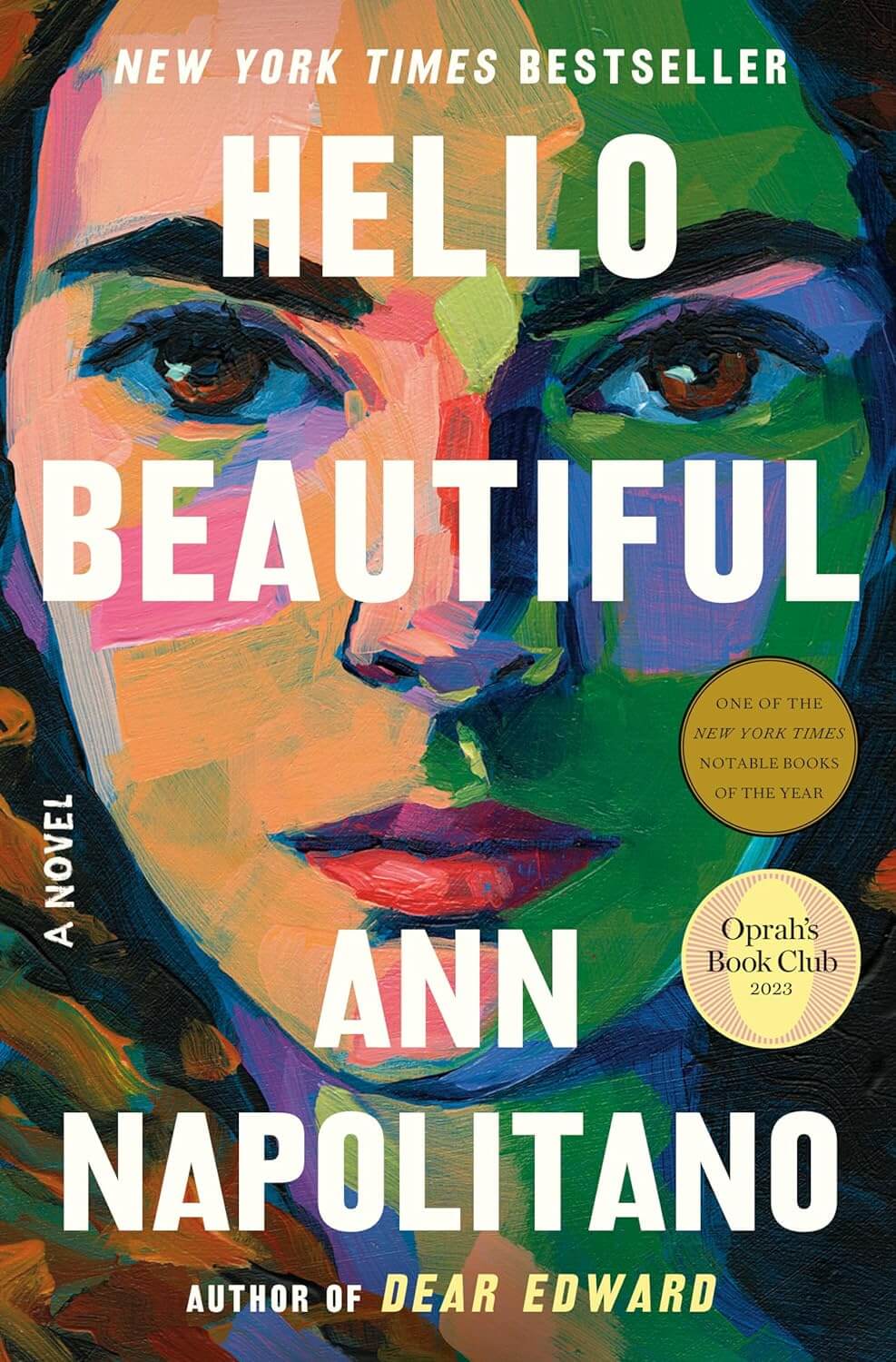There is no part of writing a book that is “easy.” But there may be one sentence that’s harder to write than all the rest.
The first line of your novel.
This single sentence is supposed to set the tone for you novel, introduce intrigue, showcase your voice and produce curiosity that makes it impossible to resist moving forward.
No pressure, right?
As we spotlight Ann Napolitano, it’s impossible to ignore the mastery of some of her first lines. We’ll give them a look and dissect them then talk about what you can do to make the most impact from line one.

Within Arms Reach first line:
My grandmother gave birth often, which I suppose increased her odds for tragedy.
First of all, wow. Now, let’s take a look at all the things this opening line is doing.
- We immediately understand that the main character comes from a big family.
- It’s instantly established that this is a story about family.
- We’re immediately curious to know “What are the tragedies?”
- Something about “gave birth often” gives us an idea that perhaps, the births were not always a joyous occasion. Perhaps religion or tradition were involved in her high numbers of births.
- There’s also a sense of who the first-person narrator is. Clearly the granddaughter of this woman we’ll be exploring, an observer and maybe a critic of her family of origin.
- Emotional evocation, whether you’re a mother or not, that line is likely to strike a cord.
- We get a sense of voice, the characters who might be involved, the mood and tone, and the action to come.
That is a lot of legwork for a sentence that is 13 words long.

Hello Beautiful first line:
For the first six days of William Water’s life, he was not an only child.
Again, a complete showstopper.
- We are immediately intrigued by how this line could be so.
- This tragedy is so emotionally evoking when you think about what that line means.
- You get a sense of the sadness that is likely to permeate this character’s worldview.
- Again, you understand that this is likely to be a story involving family.
- It’s a rare thing that a character being introduced at birth actually works, but boy is it working.
Using fifteen words, Ann tells us about a main character’s origin story, shifts our mood in preparation for the story and embeds curiosity into the reader.
Now, let’s talk about how you can invoke this much impact with your first line.
Don’t try to get it right the first time.
Before you even think about getting your first line right, it’s important to understand that this is likely to take some tinkering. Not only will you likely have to write, and rewrite, and rewrite again when it comes to your first line (maybe even your first few pages), but odds are it won’t be a line you can write until the book is fully written. A first line is doing so much work that if you don’t know your whole story, you may not be able to conceptualize it until a much later point. And if you’re trying to write the perfect first line from day one, you may never make it to the end.
Think about your genre.
What sort of book are you writing? Is it a sexy romance or a moody literary novel or humorous space opera? Your first line shouldn’t be capable of fitting into just any novel. It should immediately set the tone. Readers should be able to get a sense for the kind of book they are going to read.
Emily Henry’s People We Meet On Vacation (romance):
On vacation, you can be anyone you want.
Not only is this highly reflective of the title and the style of Emily Henry’s book, but there’s a light, airiness you might expect from a “beach read.”
Mike Chen’s Here and Now and Then (science fiction)
Kin Stewart used to be time-traveling secret agent.
There is no denying what genre we’re operating in here. Not only that, but a first line so blunt and direct is still doing its job. Why did he “used to be”? What is he doing now? Where does he come from? What does a time-traveling secret agent do?
Gillian Flynn’s Gone Girl (psychological thriller)
When I think of my wife, I always think of her head.
While this is a line that tends to become even more poignant once you’ve read the story, it still kicks things off in a somewhat ominous tone you might expect from a thriller. It’s not a terribly affectionate description. In fact, it might even make you recoil a bit. If you’ve read the book, you know this is exactly the way you should feel.
Each of these lines are about the same length, but all convey a very different energy. Think about the atmosphere you want to create around your story and make sure your first line serves both the genre and the feeling you’re trying to create. It should be both familiar and surprising, convey a lot while leaving open space for questions.
Curiosity is key.
On The Shit No One Tells You About Writing podcast, they talk a lot about “curiosity seeds.” In short, this means you’re planting questions that create intrigue as you introduce your story. And if you can plant a curiosity seed in your first line… that’s golden.
Throughout your book, the goal should be to keep your audience moving forward, but it’s likely the most important to do so in your first line. Think of this as the one sample you’re giving out to sell readers on your whole story. From trying to land an agent to a browser in a book store, this line could make or break someone’s willingness to move forward.
Here’s a few ways you can do this:
- Pose a question. Not literally. Most novels won’t start with a question. But use your words to manufacture a question in your readers mind. Why is she doing this? Who is she talking about? What happened that made him this way?
- Take them by surprise. Your first line can be a little bit jarring and make the reader go, wait what?
- Foreshadow the action. Let the reader know that they won’t be fumbling around in the dark waiting for the story to start. Let them know action is coming (and soon). “The wedding had been a disaster before the day even started.” “There was no denying that the fire was my fault.” “If I could go back, I would have never gotten out of bed that day.”
- Allude to conflict. Conflict, while unpleasant in real life, is what keeps a story interesting. So hinting that there is conflict to come is a good way to develop intrigue.
- Establish your character in an unusual way. Make your MC immediately interesting by saying something shocking. “She had never seen herself as a mother, but five places were set at her dinner table, nonetheless.”
It can be tempting to describe scenery or to dive into exposition or to explain the physical attributes of your main character, but does that make someone curious? Read your line and ask yourself objectively, does this make me want to read the next line?
Dive into the action.
We often think of books in terms of a slow beginning, rising action, climax, and then falling action. While there’s nothing wrong with this arc, it can imply that it’s okay for your opening to be low key. Too often, new novelists will kick off their book with the main character alone, often in reflection. This, unfortunately, is not very exciting. Not in real life. Not in a book.
The best way to get an audience familiar with your MC and your story is to drop them into action and have them interacting with other people. An interior monologue can be informational, but is it intriguing?
Consider this. Would you rather:
- Meet a character who is thinking about an upcoming promotion?
OR
- Meet a character who is talking to a co-worker in the bathroom about a promotion when another employee overhears them?
Would you rather:
- Meet a character contemplating divorce while she puts on makeup?
OR
- Meet a character who is engaging in tense conversation with her spouse and as she attempts to get herself and her kids out the door?
The more action you can inject into that first line that promises the reader of that the action is happening right now, the better.
Keep it short.
Though there is something to be said for refinement and being concise throughout your entire book, try to make the biggest splash with the fewest words. There is something confident and skillful about a short sentence that delivers a punch.
Here’s an example:
Long first line: When she woke up that morning, the sun, shining in through her window, Mary thought it was just another day, but she was quickly proven wrong.
Short first line: Sun shining through a window doesn’t guarantee it will be a good day.
There isn’t an exact word count you’re trying to hit, but the more direct you can be, the better. Fewer words will leave a greater impression and make you look like a pro! It takes confidence to strip away all the extra descriptions and the need to fill the reader’s mind with all your intentions. Give them just enough to establish what was discussed in the above tips, but nothing more.
Consider your ending.
This is sort of an advanced tip, but it’s one to consider nonetheless. The first line can be used to set up, in some way, the conclusion of your story. It can be a mirror image or even a hint of where everything is going. That’s why first lines shouldn’t be final until your story is.
Poetic, and often circular narratives are a sign of true artistry. Your opener should feel like the beginning of the inevitable journey your readers are on. They may not know it at the time, but in hindsight, its brilliance is revealed.
This is the first line in George Orwell’s 1984:
“It was a bright cold day in April, and the clocks were striking thirteen.”
We are instantly transported into the dystopia where things are the clearly, a little off. Big Brother has distorted everything, including time. Now (spoiler alert), by the end of the book, our rebellious main character also succumbs to the controls of this totalitarian government, conforming to the mistruths. In a lot of ways, Winston’s internal clock strikes thirteen as he is absorbed by the overwhelming nature of this government.
Orwell doesn’t give away the whole plot, and yet, he kind of does. If Big Brother can change the constructs of time, how is an ordinary citizen supposed to stand up to that power?
Try this exercise.
Once you’ve finished your book and you feel confident that the story is, for the most part, set, play around with your first line. Try writing ten, maybe even twenty different versions. Play with safe, expected variations and also with wild and unusual lines. The more you explore, the more likely you are to find a winner.
If you have some writing friends, have them vote on which one is the best. Seeking a writing community? Email us with your first line variations at hello@shewrites.com and we just might feature a poll on social media!














Leave A Comment